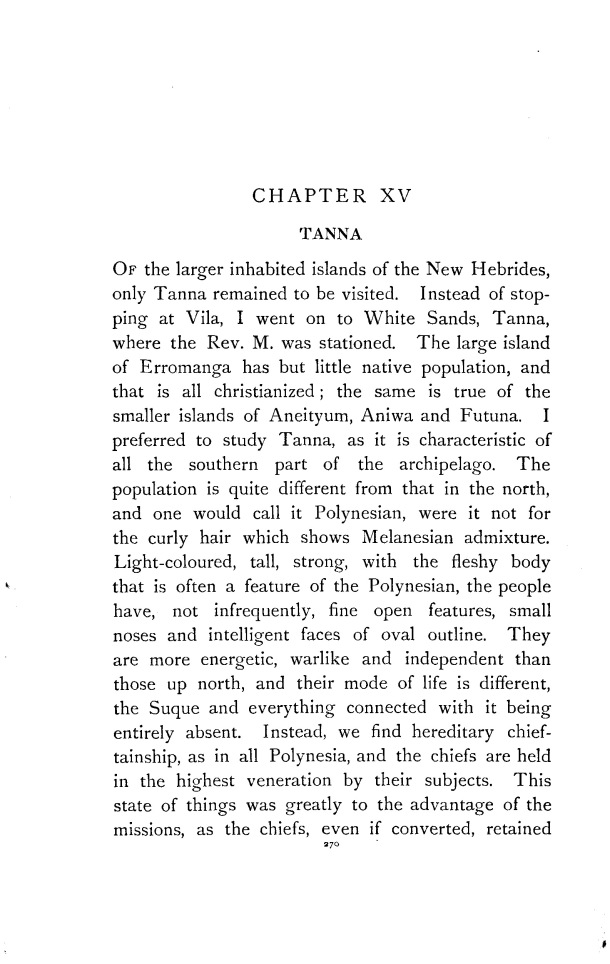|
|  [Note: this transcription was produced by an automatic OCR engine]
CHAPTER XV
TANN A
OF the larger inhabited islands of the New Hebrides,
only Tanna remained to be visited. Instead of stop-
ping at Vila, I went on to White Sands, Tanna,
where the Rev. M. was stationed. The large island
of Erromanga has but little native population, and
that is all christianized; the same is true of the
smaller islands of Aneityum, Aniwa and Futuna. I
preferred to study Tanna, as it is characteristic of
all the southern part of the archipelago. The
population is quite different from that in the north,
and one would call it Polynesian, were it not for
the curly hair which shows Melanesian admixture.
Light-coloured, tall, strong, with the fleshy body
that is often a feature of the Polynesian, the people
have, not infrequently, fine open features, small
noses and intelligent faces of oval outline. They
are more energetic, warlike and independent than
those up north, and their mode of life is different,
the Suque and everything connected with it being
entirely absent. Instead, we find hereditary chief-
tainship, as in all Polynesia, and the chiefs are held
in the highest veneration by their subjects. This
state of things was greatly to the advantage of the
missions, as the chiefs, even if converted, retained
27o
|